If you haven’t tried fresh pasta from homemade pasta dough, you’re in for a treat! Homemade fresh pasta is much more chewy, bouncy, and rich than boxed dried pasta at the store. It may seem daunting, but it is worth the effort to make fresh pasta at home. You’ll have fresh lasagne sheets, fettuccine, farfalle, ravioli, pappardelle, and more in no time.
Pasta dough is shockingly easy to make and uses kitchen staples. You just need some patience as you run the dough through the machine. There’s truly nothing more comforting than a big bowl of pasta, and made-from-scratch makes it taste that much more special. Try my pizza dough recipe and artisan bread recipe for another fun kitchen project that you can enjoy with your family.
What You Need to Make This Recipe
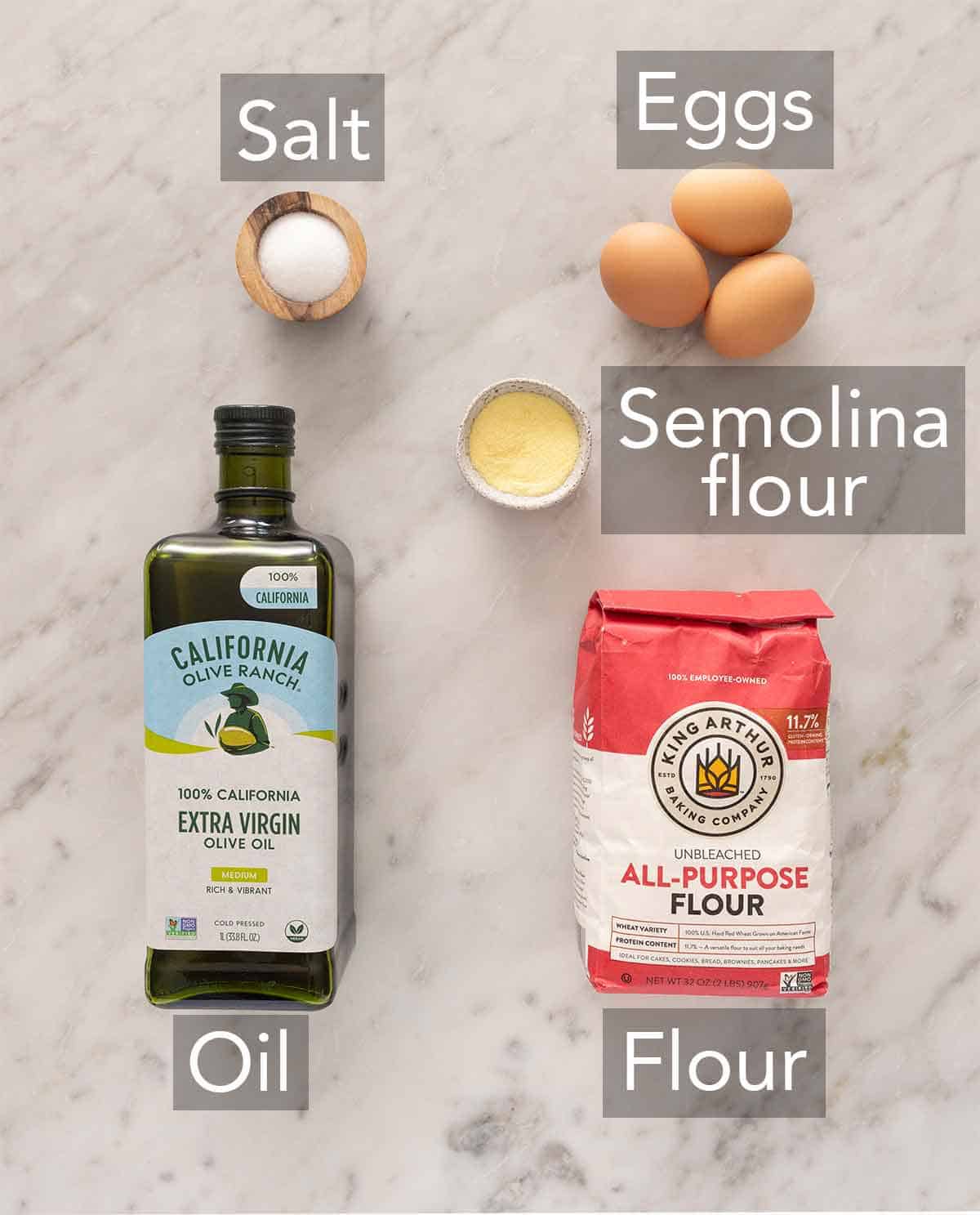
Flour — to keep things simple, I use all-purpose flour. While there are specialty flours such as “00” flour, I find that all-purpose flour will still yield chewy, bouncy pasta noodles. You can use “00” flour if you have it on hand or even use a mixture of both.
Eggs — for the best homemade fresh pasta, use the highest quality eggs you can find. The eggs add richness and moisture to the dough. Make sure you are using large eggs, as the size of the eggs matter. The color of the egg yolks is what gives your pasta its beautiful yellow color.
Olive oil — the olive oil adds moisture to the pasta dough and helps bring the dough together.
Semolina — I like dusting my fresh pasta with semolina as it absorbs less moisture than regular flour. Dusting the pasta helps prevent the pasta dough from sticking to surfaces as you work with it.
How to Make Pasta Dough
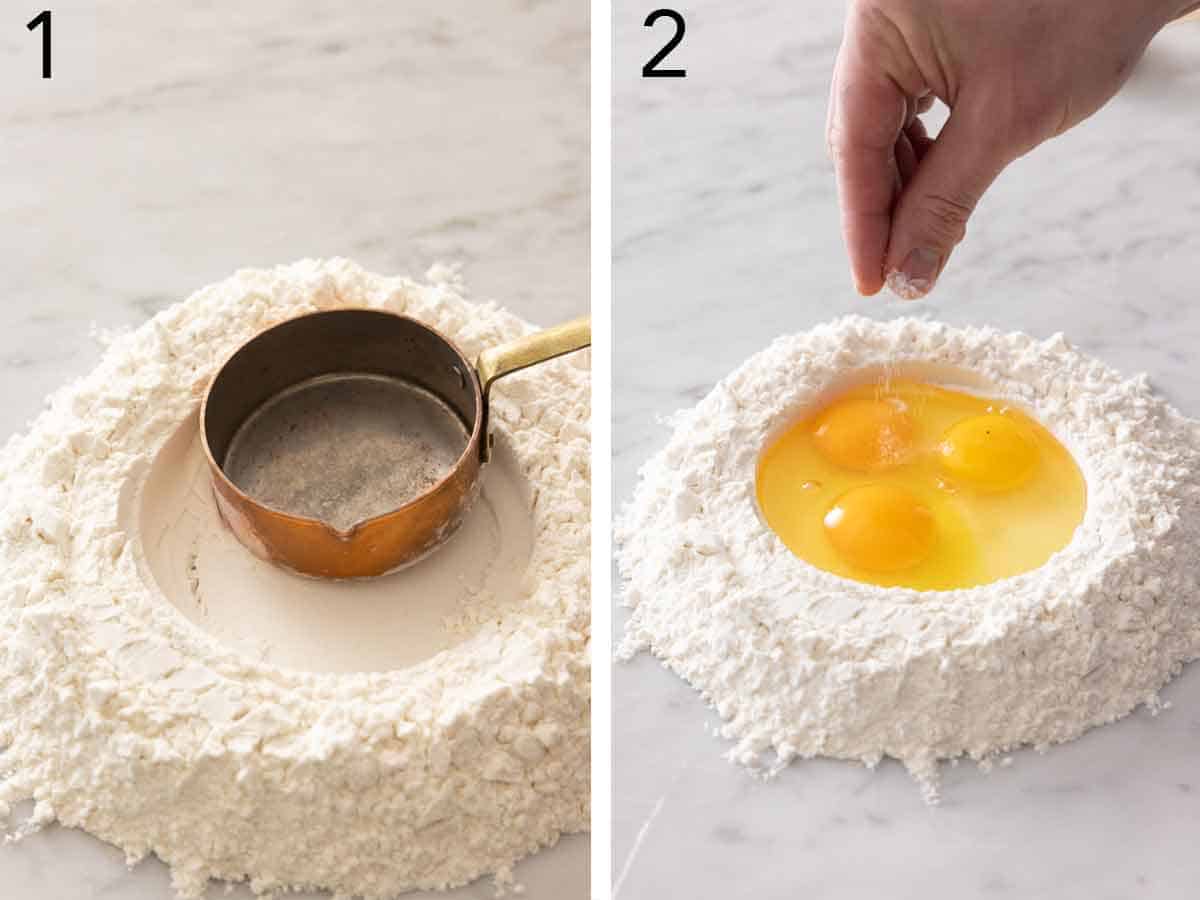
1. On a smooth, clean work surface, place 2 cups of flour in a mound. Using the back of a rounded bowl or large spoon, create a well in the center of the flour large enough for the wet ingredients, about 4 inches wide.
2. Crack the eggs into the well, and add olive oil and salt.
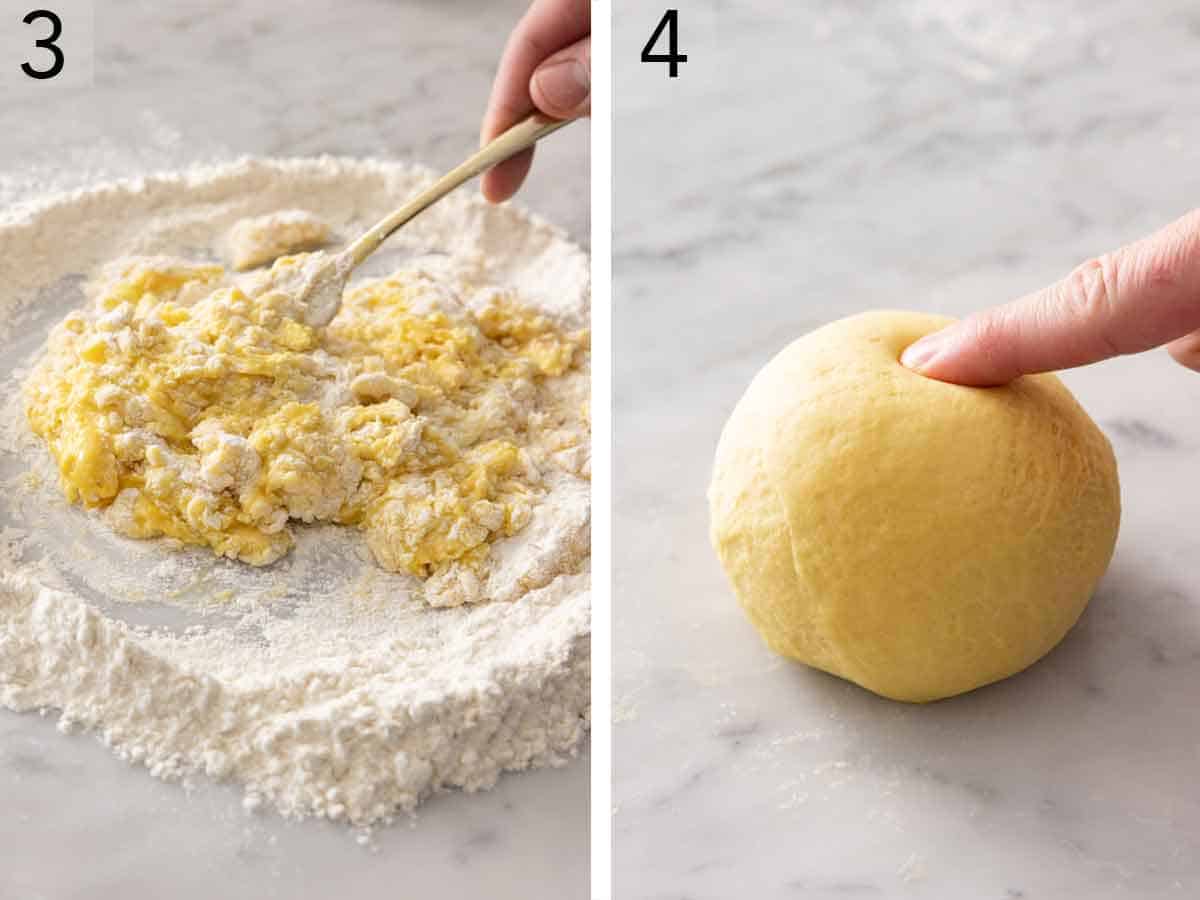
3. Using a fork, start beating the egg mixture at the center, slowly making your circles bigger to start to incorporate the flour from the sides. Beat gently to try and keep the well from breaking. Continue mixing in the flour until the egg mixture is thickened and starts to form a shaggy mixture.
4. Fold the mixture together until a shaggy dough ball comes together. Knead the dough by hand until smooth and elastic, about 10 to 15 minutes, adding the remaining ¼ cup of flour 1 tablespoon at a time during kneading if the dough feels sticky at any point. Shape into a ball and wrap the dough ball tightly in plastic wrap. Let the dough rest at room temperature for at least 1 hour and up to 3 hours.
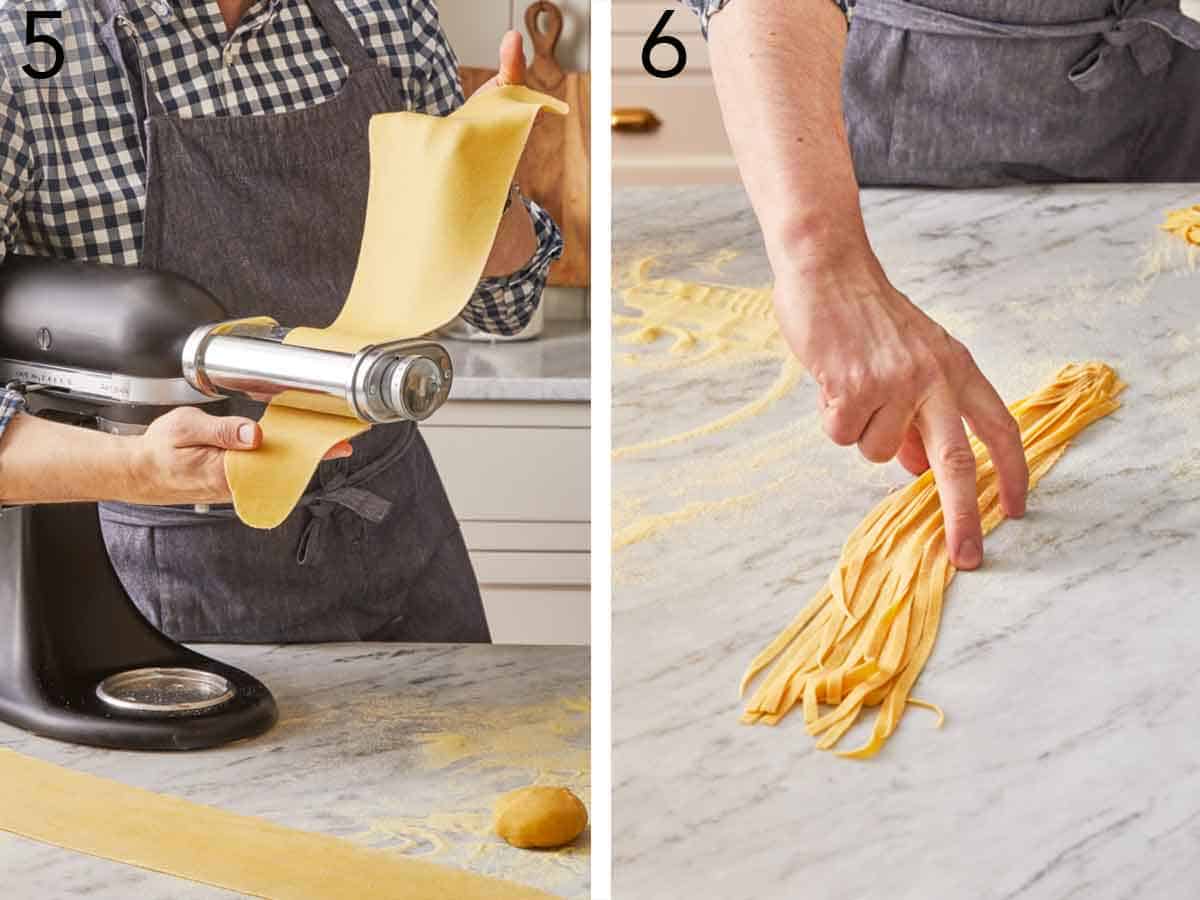
5. Cut the rested pasta dough into 4 equal pieces, and with one piece of dough at a time, press the dough into a rectangle, about ¼ inch thick. Sprinkle with semolina flour. Set an electric or hand-crank pasta rolling machine on its widest setting (Number 1) and start running the dough through the machine. Adjust the rollers down to the next setting (Number 2) and pass the dough through the roller. Continue adjusting the roller thickness and passing the pasta through the rollers until you reach the third thinnest setting (Number 6).
6. Sprinkle the finished pasta sheet with semolina flour, gently fold it to fit the prepared sheet tray, and cover it with a tea towel. Cut each pasta sheet into the desired shape by either cutting by hand or running them through a pasta cutter attachment. Cook the pasta or freeze it for later.
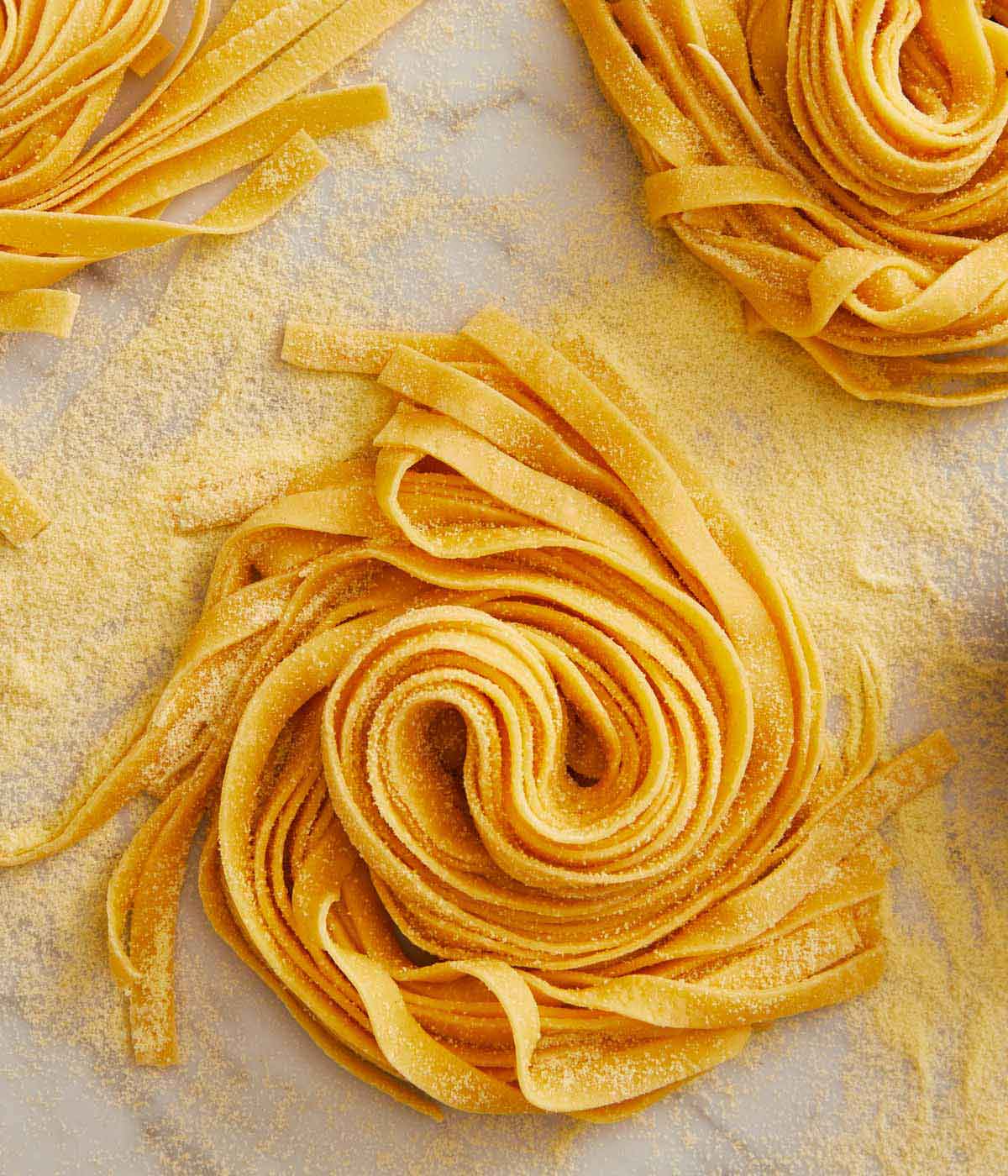
Pro Tips for Making This Recipe
- The easiest way to cut pasta dough by hand is by taking a pasta sheet, gently folding it in half, and then gently folding it over a few times. Cut across into ribbons of your desired width, and you can unfold them into long strands.
- If your pasta dough seems difficult to knead, add more water a tablespoon at a time. If it feels too soft, add more flour a tablespoon at a time. It should feel smooth and elastic.
- Do not skip allowing the dough to rest. Resting the dough allows the gluten a chance to relax, which makes it easier to roll out.
- If you do not want to knead the dough by hand, you can place the flour and make a well for the eggs, olive oil, and salt inside the bowl of a stand mixer fitted with a dough hook. Knead on speed 1 or 2 until the dough becomes smooth and supple. Let the dough rest and continue with the rest of the instructions.
- You can also make pasta dough in a food processor. Like in a mixer, add the ingredients to the food processor and run until the dough comes together into a rough ball. Then knead the dough on the counter until smooth, let the dough rest, and continue with the rest of the instructions
- If you do not have a pasta machine, you can roll the pasta out with a rolling pin. However, it will take a lot more time and effort and may lead to inconsistent thickness. If you’re using a rolling pin, make sure the pasta is paper-thin enough that you can see your hand through it.
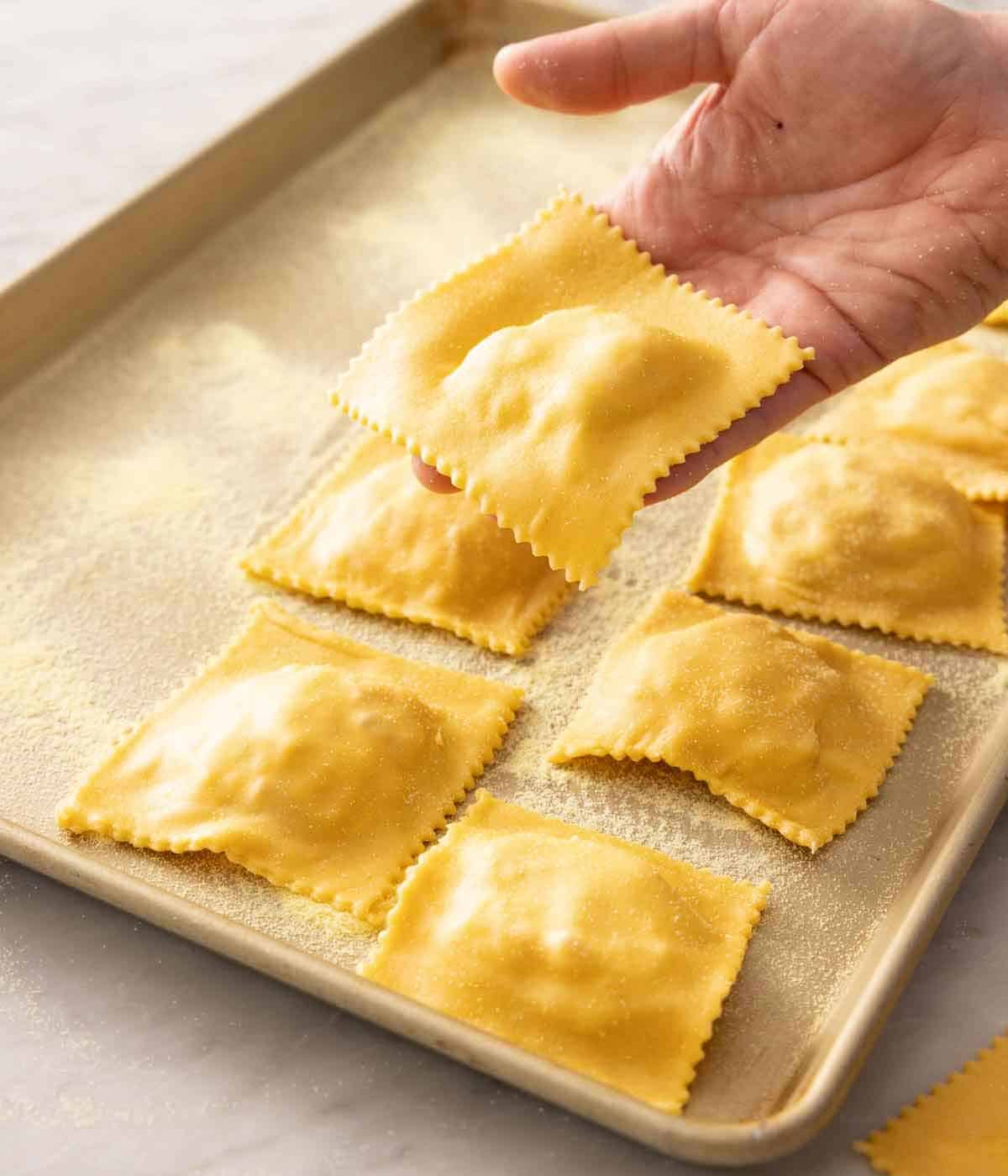
Frequently Asked Questions
How to store fresh pasta?
It’s best to cook fresh pasta as soon as possible. Let the rolled and cut pasta air out on a baking sheet or drying rack for at least 30 minutes. Transfer the pasta dough to an airtight container and refrigerate for up to 2 days. If you would like to keep the dough for longer before cooking, I suggest you freeze it.
How to freeze fresh pasta?
Flash freeze the pasta on a parchment paper-lined baking sheet until solid, then store it in an airtight container in the freezer for up to 1 month. Cook the pasta directly from frozen; no need to defrost it first.
What are some recipes I can use this pasta in?
This fresh pasta dough recipe is delicious with just a simple sauce, but some of my favorite recipes to use this pasta are my spinach artichoke pasta, lobster ravioli, cacio e pepe, chicken alfredo, and shrimp scampi.
If you’ve tried this Pasta Dough recipe, then don’t forget to rate the recipe and let me know how you got on in the comments below, I love hearing from you!
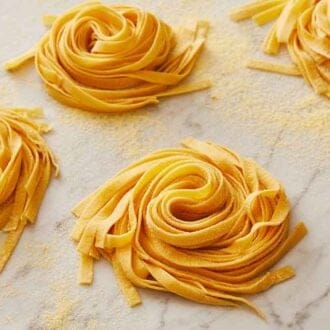
Pasta Dough Recipe
Video
Equipment
- Fork
- Pasta roller
Ingredients
- 2 to 2¼ cups all-purpose flour (240g-270g)
- 3 large eggs
- 1 tablespoon olive oil
- ½ teaspoon salt
- semolina flour for dusting
Instructions
- On a smooth clean work surface, place 2 cups of the flour in a mound. Using the back of a rounded bowl or large spoon, create a well in the center of the flour large enough for the wet ingredients, about 4 inches wide. Crack the eggs into the well, and add olive oil and salt.
- Using a fork, start beating the egg mixture at the center, slowly making your circles bigger to start to incorporate the flour from the sides. Beat gently to try and keep the well from breaking. Continue mixing in the flour until the egg mixture is thickened and starts to form a shaggy mixture.
- Using a bench scraper or your hands, fold the mixture together until a shaggy dough ball comes together. Knead the dough by hand until smooth and elastic, about 10 to 15 minutes, adding the remaining ¼ cup of flour 1 tablespoon at a time during kneading if the dough feels sticky at any point. The dough may feel dry and crumbly at the start but should feel smooth and only slightly tacky by the end.
- Shape into a ball and wrap the dough ball tightly in plastic wrap. Let the dough rest at room temperature for at least 1 hour and up to 3 hours. Or, refrigerate the dough for up to 24 hours. Bring to room temperature before rolling.
- Lightly dust a large baking sheet with semolina flour. (Or, you can use all-purpose flour.)
- Cut the rested pasta dough into 4 equal pieces and loosely cover with plastic wrap. Working with one piece of dough at a time, press the dough into a rectangle, about ¼ inch thick. Sprinkle with semolina flour.
- Set an electric or hand-crank pasta rolling machine on its widest setting (Number 1). Pass the dough through rollers. Fold the dough in half, and pass through again, feeding the shortest side through the rollers on each roll. Repeat the folding and rolling one more time, then pass the dough through the rollers 2 more times without folding it in half.
- Adjust the rollers down to the next setting (Number 2). Pass the dough through the roller 2 times, sprinkling with semolina as needed to keep the dough from sticking.
- Continue adjusting the roller thickness and passing the pasta through the rollers twice on each setting, down to the third thinnest setting (Number 6). The pasta sheets will continue to get longer with each pass.
- Sprinkle the finished pasta sheet with semolina flour and gently fold it to fit the prepared sheet tray. Cover with a tea towel.
- Cut each pasta sheet into the desired shape by either cutting by hand or running them through a pasta cutter attachment. Toss in semolina flour and return to the prepared baking sheet. Uncooked fresh pasta can be formed into small mounds and frozen on a parchment paper-lined baking sheet until solid, then stored in an airtight container in the freezer for up to 1 month. (Cook from frozen.)
- To cook the pasta, drop it into a large pot of salted boiling water and cook, stirring occasionally until tender, about 3 to 5 minutes depending on the shape and size of the pasta.
Notes
- The easiest way to cut pasta by hand is by taking a pasta sheet, gently folding it in half, and then gently folding it over a few times. Cut across into ribbons of your desired width, and you can unfold them into long strands.
- If your pasta dough seems difficult to knead, add more water a tablespoon at a time. If it feels too soft, add more flour a tablespoon at a time. It should feel smooth and elastic.
- Do not skip allowing the dough to rest. Resting the dough allows the gluten a chance to relax, which makes it easier to roll out.
- If you do not want to knead the dough by hand, you can place the flour and make a well for the eggs, olive oil, and salt inside the bowl of a stand mixer fitted with a dough hook. Knead on speed 1 or 2 until the dough becomes smooth and supple. Let the dough rest and continue with the rest of the instructions.
- You can also make pasta dough in a food processor. Like in a mixer, add the ingredients to the food processor and run until the dough comes together into a rough ball. Then knead the dough on the counter until smooth, let the dough rest, and continue with the rest of the instructions
- If you do not have a pasta machine, you can roll the pasta out with a rolling pin. However, it will take a lot more time and effort and may lead to inconsistent thickness. If you’re using a rolling pin, make sure the pasta is paper-thin enough that you can see your hand through it.



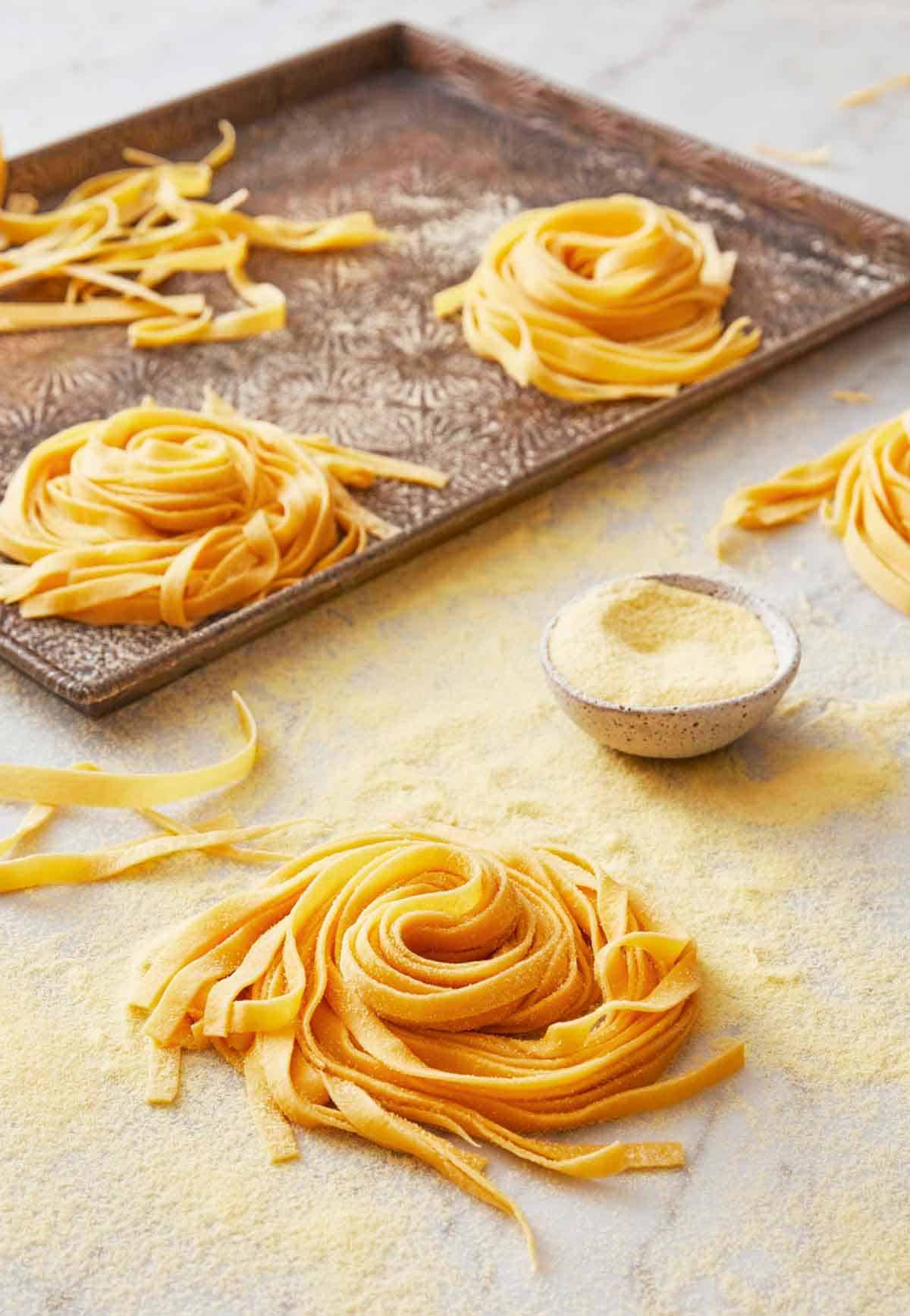

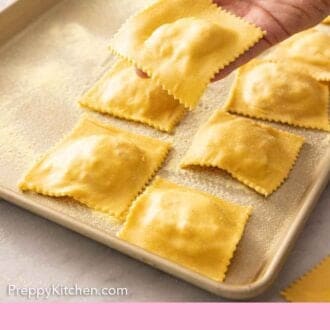
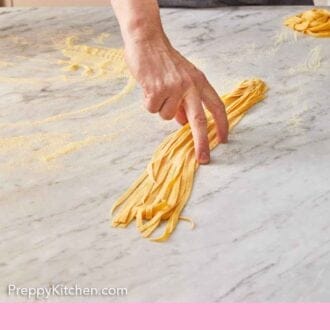

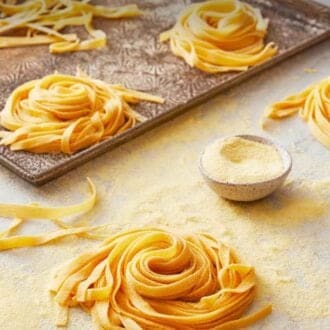


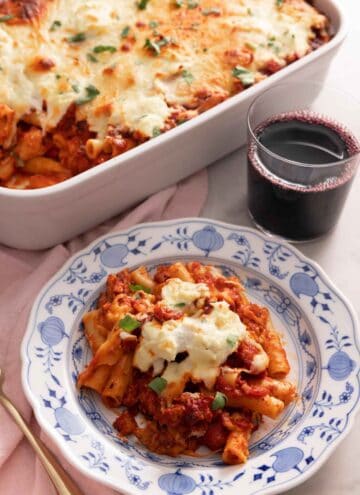

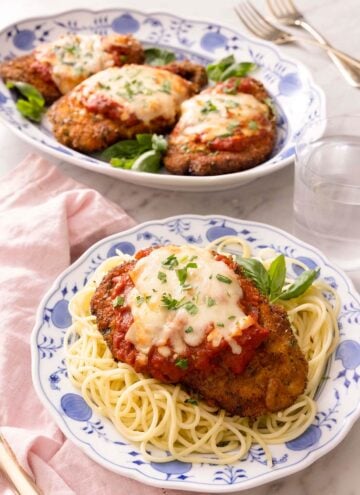

CASEY says
Excellent and easy to follow! My family loved the fettuccine.
J.D. Mosley-Matchett says
Amazing! This is my new go-to recipe for pasta. LOVE just using regular AP flour and it works great. But keep some semolina on hand for sprinkling…you’ll only need a couple of tablespoons, if that much.
Carole says
I’ve been wanting to make pasta for a long time now and this weekend I finally did! It was so easy and fun to make but the pasta turned out so good! I could eat them with just some butter; but we used them for your shrimp scampi recipe and it was amazing. I am definitely going to be making this pasta often.
Peter says
The best pasta dough recipe I’ve used. Other doughs came out sticky for some reason, but this came out perfection. My partner and i made Ravioli for valentine’s day so I was really happy at how perfect the pasta sheets came out 🙂